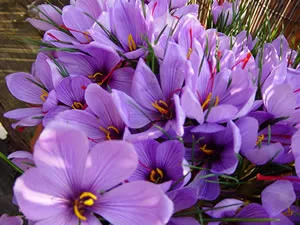Latin name: Arctium lappa
Synonyms: Arctium majus,
Lappa major
Family: Compositae
Medicinal use of Great Burdock : Burdock is one of the foremost detoxifying herbs in both Chinese and Western herbal medicine. The dried root of one year old plants is the official herb, but the leaves and fruits can also be used. It is used to treat conditions caused by an "overload" of toxins, such as throat and other infections, boils, rashes and other skin problems. The root is thought to be particularly good at helping to eliminate heavy metals from the body. The plant is also part of a North American formula called essiac which is a popular treatment for cancer. Its effectiveness has never been reliably proven or disproven since controlled studies have not been carried out. The other herbs included in the formula are Rumex acetosella, Ulmus rubra and Rheum palmatum. The plant is antibacterial, antifungal, carminative. It has soothing, mucilaginous properties and is said to be one of the most certain cures for many types of skin diseases, burns, bruises etc. It is used in the treatment of herpes, eczema, acne, impetigo, ringworm, boils, bites etc. The plant can be taken internally as an infusion, or used externally as a wash. Use with caution. The roots of one-year old plants are harvested in mid-summer and dried. They are alterative, aperient, blood purifier, cholagogue, depurative, diaphoretic, diuretic and stomachic. The seed is alterative, antiphlogistic, depurative, diaphoretic and diuretic. Recent research has shown that seed extracts lower blood sugar levels. The seed is harvested in the summer and dried for later use. The crushed seed is poulticed onto bruises. The leaves are poulticed onto burns, ulcers and sores.
Root - raw or cooked. Very young roots can be eaten raw, but older roots are normally cooked. They can be up to 120cm long and 2.5cm wide at the top, but are best harvested when no more than 60cm long. Old and very long roots are apt to become woody at the core. Although it does not have much flavour the root can absorb other flavours. Young roots have a mild flavour, but this becomes stronger as the root gets older. The root is white but discolours rapidly when exposed to the air. Roots can be dried for later use. They contain about 2.5% protein, 0.14% fat, 14.5% carbohydrate, 1.17% ash. The root contains about 45% inulin. Inulin is a starch that cannot be digested by the human body, and thus passes straight through the digestive system. In some people this starch will cause fermentation in the gut, resulting in wind. Inulin can be converted into a sweetener that is suitable for diabetics to eat. Young leaves - raw or cooked. A mucilaginous texture. The leaves contain about 3.5% protein, 1.8% fat, 19.4% carbohydrate, 8.8% ash. Young stalks and branches - raw or cooked. Used like asparagus or spinach. They taste best if the rind is removed. The leaf stalks can be parboiled and used as a substitute for cardoons. The pith of the flowering stem can be eaten raw in salads, boiled or made into confections. A delicate vegetable, somewhat like asparagus in flavour. The seeds can be sprouted and used like bean-sprouts.
Other uses of the plant : The juice of the plant, when used as a friction, is said to have a stimulating action against baldness.
Tags : Medicinal herbs |
Great Burdock seed |
Arctium lappa |
Arctium lappa seed
Great Burdock Seeds |
Great Burdock Tea Leaves |
Arctium lappa tea
Arcitum lappa roots |
Great Burdock roots
Parts available : Seed/root/leaves are available
(For research purpose. Not for commercially use)
The JK medicinal Plants Introduction Centre
"Ginkgo House", Nambalbal, Pampore PPR J&K 192121
Mob:09858986794
Ph: 01933-223705
e-mail: jkmpic@gmail.com
home:
http://jkmpic.blogspot.in





